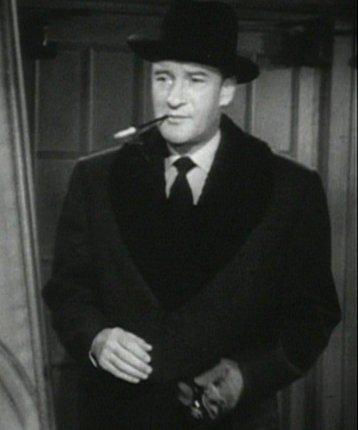The Grand Unification Theory of Theatre Reviewing
A “good” play review is traditionally thought of as a “positive” review. We need to move beyond that, and define a good review as a review that meets minimum requirements of what a review should be. We need, at long last, to define a standard of excellence for theatre reviews.
The Grand Unification Theory of Theatre Reviewing begins, as all theories must, by rejecting the historical paradigm. The historical paradigm, in this case is “A good review = A positive review.”
But what to replace this with?
Theatre reviews are read by three distinct audiences: readers interested in theatre in general, the artists whose work is being reviewed, and the potential audience for a particular play. While the three consumers of theatre reviews are all important, most likely the majority of people read theatre reviews to determine if they want to attend the play being reviewed. So, for purposes of this discussion, if readers want to decide whether or not to attend a particular play, then a “good” review is one that assists them in that decision.
So, a ‘good’ review helps readers decide whether or not to attend the play, regardless of the reviewer's personal reaction to the play.
Someone who knows me can advise against or recommend a play to me. A reviewer, who does not know me, cannot. What a reviewer can do is accurately report what he or she has seen, so I can decide for myself whether or not to attend the play. The reviewer hates “it.” That's fine, as long as I can figure out what “it” is. Because “it” might be exactly what I am looking for.
Therefore, The Grand Unification Theory of Theatre Reviewing proposes this new equation:
“A good review = A review that helps readers determine if they would like to attend the play.”
We must hold articles in the entertainment section to the same standard of excellence as articles in the travel section. In assisting readers with travel plans, a well-written travel article describes what the reader might experience upon traveling to a particular destination. If the reader finishes the article without a clue as to whether or not the place may be of interest as a travel destination, the author has failed and probably will not last long as a travel writer. Shouldn’t we hold theatre reviewers to the same standard?
So, a “good” review helps readers decide whether or not to attend the play, regardless of the reviewer's personal reaction to the play. But how can a review help a diverse audience of readers determine if they want to see the play being reviewed?
In order to assist the reader in deciding which plays to attend, a conscientious review must fulfill the following four requirements: First, it must be accurate. Second, it must capture the pulse of the audience. Third, it must use an appropriate yardstick in assessing the play. Finally, it must include the reviewer's opinion of the play. When reviews include these four elements, readers can make an informed decision about whether or not to see the play. When reviews do not include these four essential elements, readers, given the choice between attending a play and turning on the TV, often opt for the latter.
Report It Accurately
As journalists, critics must first and foremost report what they see. Friends of mine took their thirteen-year-old daughter to see a play that got a rave review in an alternative weekly, only to discover that the second half of the play is done in the nude. This was not something their thirteen-year-old daughter felt comfortable with. Unfortunately, nudity was not mentioned at all in the review.
Any competent review should mention the genre of the play. For example, is it a comedy? Drama?
A review of a small production of Kafka's Dick by Alan Bennett appeared in an alternative weekly paper. It is a textbook example of inaccurate reporting. The short review says that the play “expose[s] plenty of myths about how a society views its artists,” and that “it suggests that literary criticism can become... a kind of spotty magnifying glass through which we consider a writer's entire body of work.”
All very thoughtful and accurate statements about the play. But the review has one problem. Kafka's Dick is an outrageously funny comedy. The night I attended, audience members were falling out of their chairs with laughter. Unfortunately, words like “funny,” “hysterical,” or “comedy,” do not appear in the review.
I was there the same night as this reviewer. Indeed the critic sat there stone-faced throughout the evening (it was theatre in the round, in a small space, and I had to look at her through the entire play), and she in turn gave it a stone-faced review.
The problem is not that my opinion is that it is funny and the critic's opinion is that it is not. The problem is that the entire audience was laughing hysterically. The critic did not accurately report on this play and therefore this seemingly thoughtful review did a complete disservice to readers who went to see this production expecting an intellectual exploration of literary criticism. Likewise, it did a disservice to readers who passed on Kafka's Dick because they were looking for a comedy.
A good review must, first, be accurate. Second, it must capture the pulse of the audience. Third, it must use an appropriate yardstick in assessing the play. Finally, it must include the reviewer's opinion of the play.
Capture the Pulse of the Audience
Why should the critic care what the audience thinks? The critic has seen more plays and has a breadth of knowledge of theatre unmatched by anyone else in the audience.
However, the critic should care about the audience reaction for the simple reason that the people in the audience are not there because they are getting paid to be there. The audience members are there because they are the type of people who attend this sort of play.
Is the critic supposed to measure the production by some aristocratic standard of excellence? Or is it the job of the critic to capture the zeitgeist of the crowd? The critic must do both, and clearly delineate the two functions. But the overall rating of the play should, if possible, reflect the reaction of the audience, and in so doing hopefully reflect the potential reaction of the reader should he or she attend the play.
Use an Appropriate Yardstick
In a Theatre Magazine article titled “Artistic Directors on Criticism,” David Herskovits, artistic director of Target Margin Theatre, writes, “First and foremost a critic must ask, ‘What were the creators trying to do?’ …This is the exit from that tired loop of criticizing something because it is not something else.” In-other-words, use an appropriate yardstick and judge a play based on what the play sets out to accomplish. Simple.
Or it should be simple. A review in the New Yorker dismissed a popular play as “nothing but hokum,” observing that “there is no workout for the spirit here.” The review condemned the audience for being taken in by such “chucklehead pleasures.”
All fine and good, except the production being reviewed is Mamma Mia, a play based on disco hits from the seventies. There is nothing in Mamma Mia’s marketing campaign that promises a spiritual workout. We already know that it’s shallow, thanks. It’s ABBA for heaven’s sake. Sorry, critic. The problem isn’t Mamma Mia. The problem is your yardstick.
Give an Opinion
The reviewer, or at minimum the arts editor, must keep in mind the goal of helping readers decide if the play being reviewed is one they would like to attend. Even opinions must be guided by this overarching goal.
A San Francisco critic concluded her scathing review of a gay theatre production with the observation that if the men are going to be nude, then “the men should be well hung”. However, this opinion about on-stage penis sizes does not assist the reader of the review because most readers are not basing their theatre-going decisions on the penis size of the actors. Had the arts editor simply applied the yardstick of “does this opinion assist readers in deciding whether or not to attend the play?” he would have realized that the penis comment does not measure up, and it would have been axed.

Photo by Wikipedia.
A Positive, Bad Review
Let us now apply the Grand Unification Theory of Theatre Reviewing to a few examples. We begin with a gushing, bad review, as reported in an alternative weekly in Seattle:
I wish I had a bat signal I could wheel out and illuminate whenever a play like T— comes along. T— is bat-signal good. … Most theatre is frankly bad, a few plays a year are good, and one or two plays a year are bat-signal good. … Buy tickets, and go. … GO. It's so good.
Every sentence of the 200-word review repeatedly admonishes the reader to attend the play. The reviewer really, really liked the play, and the producers of the play probably considered this a “good” review. But checking out the online reader response to this review and we see the Grand Unification Theory of Theatre Reviewing in action. Readers were pissed off. They do not want to be told to go see “it.” Readers desperately want to know what “it” is so they can decide for themselves whether to attend the play. Readers want good journalism.
A Negative, Good Review
If we accept the premise that a well-written review assists the reader in deciding whether to attend the production, then it becomes easy to spot “good” reviews.
Here is an example of a well-written theatre review of the play Metamorphoses found in The New Yorker:
Ovid's tales, loosely adapted and directed by Mary Zimmerman, who had the ingenious idea of staging the caprice of the gods in a swimming pool. The production is fun and full of wonder, but it illustrates rather than dramatizes psychic struggle. The show's gimmick, the pool, turns out to be its metaphor—refreshing and shallow.
Traditionally, this review would be considered a “bad” review, because the critic did not like the play. But applying our four-point standard of excellence to this review classifies this as a “good” review! Why? Three sentences and I have all the information I need. Notice that this review wastes no words on descriptions of the actors or the plot. It quickly and efficiently describes the look and feel of the production, and cleanly separates the description from the opinion. Swimming pool, fun and wonder. Shallow and no drama. Sounds like one of those “performance art” shows that I absolutely love. Sure, it may be emotionally shallow but that's the price you pay for that rich, juicy avant garde thrill. I'm turning off the TV. I'm going.
There, that really wasn't so difficult was it? All it takes is good journalism.










Comments
The article is just the start of the conversation—we want to know what you think about this subject, too! HowlRound is a space for knowledge-sharing, and we welcome spirited, thoughtful, and on-topic dialogue. Find our full comments policy here
Why this is a "grand unification theory"? Is it simply because borrowing the name from the sought after goal of many a theoretical physicist is an attention-getter? It's certainly not a theory but a series of recommendations, and it is unclear what it unifies.
Years ago, when I spent a four-year stint as a freelance theatre critic, a senior critic at the region's major daily newspaper gave me one bit of advice: "Make your commentary useful."
Any particular reason why there are no links to the quoted reviews (assuming that they aren't behind a paywall?) Critics, of which I am one, whether good practitioners or bad, still have to cite the play and the particular production.
Hi Ian - Thank you for being engaged and interested in the topic! The HowlRound editors asked the same question you are asking here. I specifically did not want this to become finger pointing at any publication, play or reviewer. I wanted the focus to be on the concepts, not the details of the particular review or reviewer.That is why there are no links to publications. - Steve
So why not rely on positive examples that illustrate your concepts, and that you do feel comfortable linking to? Intentionally or not, the not-so-subliminal message of this essay is that, generally speaking, critics are doofuses.
I have to agree with JL Mandell's view that the general tone is that critics don't know what they are doing (and yes, as a critic, there are a few of my colleagues whom I think aren't quite up to snuff.) More to the point -- any competent critic avoids the pitfalls easily.
So I have to ask: who do you see as your audience for this piece, Steve?
A couple of things you didn't mention, Steve, and actually, nobody else has either. First, I find that so many reviews tell me the story of the play that I wait until I'm back from a play before I read the review. I use reviews as a way to think over what I saw. I can't get reviewers to come to my plays--though I've now had 18 on stages and gotten lots of full houses--but in a way I'm sometimes glad. That way, my audiences have the opportunity to be surprised at what my characters do. (Of course I also find it a tremendous difficulty for my so-called playwriting career that I can't get reviewers.)
Which leads to my second comment which is that in the SF Bay Area, there really is only one reviewer, the one in the CHRON, and he pretty much sticks to the Equity houses. I think he likes feeling like a big shot, having great seats, lots of attention, being quoted, etc. He's not at all interested in helping the so called "emerging" playwrights learn and create new work. It's all about reviewing Death of a Salesman for the 100th time, so he can keep his column and his name recognition.
Of course there are probably reviewers all over the web at this point, but I seem to be too busy trying to write my plays and find places to have them produced that I haven't spent the time to chase all that down.
If there is only one critic, chances are that he's sticking to the equity houses because his editor feels that those are the only ones that are going to get name recognition from the readers. Because I write for The Arts Fuse which has a number of theater writers (including my editor) I have a lot more flexibility to review mid-sized and fringe companies.
As to getting people to come to review your plays -- you have to be proactive and invite the critics to your show. Chances are that you are in a large metropolitan area where there is a lot of theater going on and only so many critics to cover it. I certainly am unable to see everything going on in my neck of the woods, let alone have the time to write about it.
I second the comment below on different audiences, different nights. I saw E-, a comedy, fairly early in the run but after opening night. I loved it and so did the rest of the audience. I brought a friend back late in the run and I seemed to be the only one laughing. My friend remarked that they didn't find the play or it's concept funny.
My suspicion was that folks who saw it early in the run were folks who regularly attended that theatre and were in tune with its very specific mission and style, while folks who attended later were like my friend, someone who had had the play recommended to them but had no idea what they were in for.
Perhaps play recs from friends need to be similarly constructed to good reviews. Now when I give theatre recs I try to keep in mind the tastes of the folks I am recommending the plays to.
Lots of valuable advice here, but it rests on the shaky premise that the function of a theatre review is to assist the reader in "deciding whether to attend the production". Well, sure, that may be one function of a review, but it's one among many.
In my book, How to Write About Theatre, I list several more reasons someone may choose to read a review. They include the reader who has already seen the show and wants a second opinion; the reader who wants some entertaining reading; the reader who likes to keep abreast of what's going on despite living thousands of miles from the theatre; and the reader of the future, looking back at what life was like today.
You could speculate that these people too would like accuracy, description, opinion, etc, but they won't be looking for exactly the same thing as the person who's wondering what to do tonight. There are also many different reasons a critic may be writing the review and many different readerships they may have in mind.
The more you look into it, the more fluid it becomes (not least because theatre itself is so fluid) which is why I agree with Jonathan Mandell that you can't be too formulaic about it.
Not bad guidelines though. More here: http://www.howtowriteaboutt...
I have seen many examples of theatre reviews that are more focused on the critic's attempt to creatively express opinions than to discuss the merits of a performance. When a review isn't objectively focused, everyone loses—potential audience members, theatre artists, and the larger theatre community. This article offers reviewers a road map that is geared toward objectivity—witness and report. As a theatre artist and frequent theatre goer, I would welcome reviews that use Mr. Lyons' theory as a framework.
You're using the word "objectivity" in talking about theater reviews? I rest my case.
Yes, I believe witnessing a performance and discussing what one saw is objective. Discussing characters, plot, design elements, and the larger themes or ideas of a production is objective. I agree with Mr. Lyons' point that the concluding section of a review should include a reviewer's opinion on the piece. Based on Mr. Lyons' framework, I would be informed as to how the reviewer arrived at this opinion based on the objective information that came before this concluding section.
I think what you probably mean to say is something that Wall Street Journal drama critic Terry Teachout said in guidelines to his students:
"Unless you’re writing a capsule review, spend more time describing what you saw than giving your opinion of it. If the description is vivid, the opinion will be implicit."
Also: "Try to make your readers feel they were there."
Yes—that's fantastic!
While some of the advice in this essay feels like common
sense, it prescribes so many “musts” for theater critics that it’s musty.
Charles McNulty, with nearly a quarter century of experience as a professional
drama critic (the last ten for the Los Angeles Times), recently wrote that “I'm
still figuring out how to write theater reviews.”
But Mr. Lyons, a playwright and artistic
director who tells us in his bio that he was a reviewer “in 2010,” has it all
figured out. It’s telling that in an essay that’s supposed to be about the right way to write a review, all but one of his specific examples are of reviews that got it wrong. Would he welcome
a piece on how to write a play (authored by, say, a theater critic) that was
illustrated primarily by stupid choices playwrights have made?
There are simply too many variables to reduce reviewing to four “requirements.” Mr. Lyons
tells us a critic “must” capture the pulse of the audience, for example. But
audiences differ from night to night, and on the press nights for professional
critics, the theater often has an uncharacteristic abundance of friends of the
producers, as well as uniquely enthusiastic fans of the show or of performers
in the cast. It’s not always an “accurate” gauge, in other words, to tell your readers how the audience around you reacted.
Even his analogy to travel writing has a big hole in it. Yes, travelers want to know
what to expect, but many theatergoers want to be surprised; they don’t want
“spoilers” in reviews. The single biggest complaint I hear from theater artists
about reviews is that too many reviews give away too much of the plot. I can see Mr. Lyons reply: A reviewer should just tell the readers what they need to know. But deciding what’s necessary
to say and what’s too much to reveal is part of the art of reviewing.
And that’s the point – reviewing is an art, not a formula.
I pour through enough reviews to see that these ideas are valuable enough to be more widespread. There are no musts or formulas to this game. We have to make and break different rules all the time depending on the present. Lyons doesn't reduce the critic to four requirements. He highlights four ideas that might lead to more thoughtful reviews. And now, when everyone has a social platform, knowledge is power when it comes to sharing opinions on new entertainment.